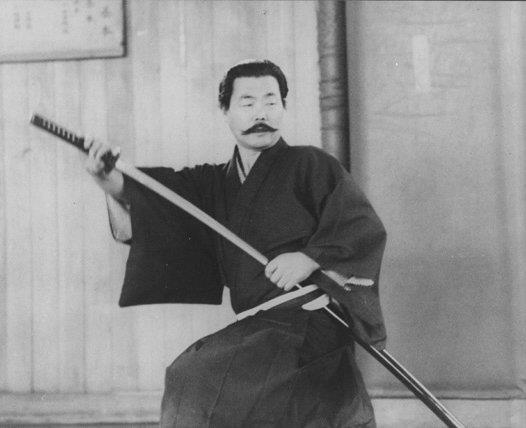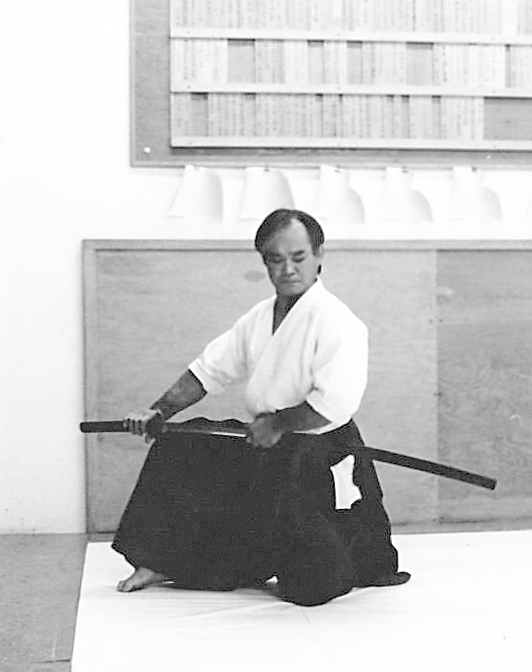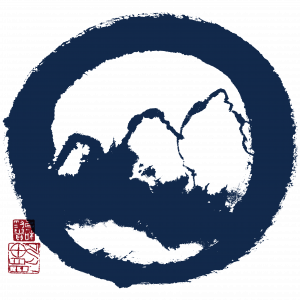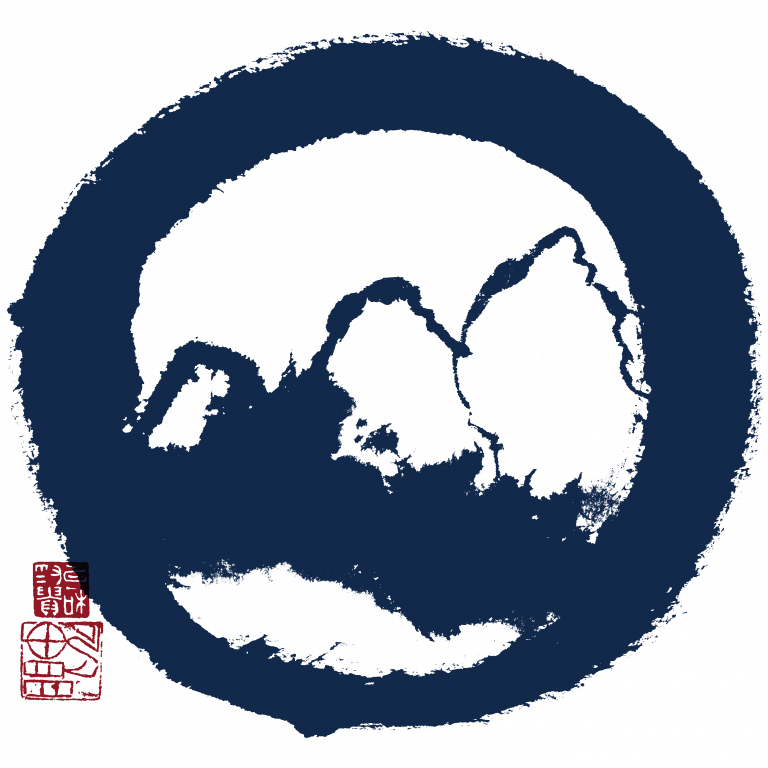The Practice of Drawing and Cutting with the Sword
at the Moment of Encounter
with 'a life worth living.' It is a system of character building."
becomes an act of self-purification.”
and then cultivate our capacity to wield the weapon as an extension of our Self."
Wielding a sword at age 70 is its own victory."
Iaido
Iaido is the study of Japanese swordsmanship in which the practitioner defensively draws and cuts at the moment of encounter with a perceived attacker. While originally practiced for combat with one or more attackers, modern Iai is primarily a meditative discipline where one confronts internal assailants (fear, greed, inertia, etc.) while maintaining a serene heart and quiet mind. The word “Iaido” approximately translates as the way of mental presence and immediate reaction, or “the way to meet the challenges of living.”
Our practice of Iaido uses both solo and partner forms, or “kata”. Kata, in the context of Budo (martial Way), generally refers to the physical enactment of a martial technique but also refers to the internal organization of energy, or Ki, and the flow of consciousness within the action. The state of mind necessary to learn kata is that of shoshin (beginners mind) which is characterized by sincerity, modesty, purity and a thirst to seek the Way or path. An attitude of shoshin, is necessary for all stages of training.
At this time, Iaido is only offered concurrently with Aikido training. Please contact us if you have questions.
Iaido Promotes
- • Focus of Attention
- • Precision of Intention
- • Efficiency of Action
- • Fluidity of Movement
- • Release of Natural Power
Iaido (Iai Batto-ho) History & Lineage
Iaido was developed by Hayashizaki Shigenobu in the late sixteenth century. Though Iai-jutsu was practiced within other schools prior to Hayashizaki’s birth, he is credited with the creation of the system we know today as Muso Shinden Ryu, which—along with another system called Shindo Munen Ryu—is the basis of our Iaido practice within Birankai.
The traditions and forms of Muso Shinden Ryu were transmitted through successive generations of swordsmen, among them Nakayama Hakudo (1872–1958), commonly recognized as one of the foremost martial artists of the Meiji period. One of Nakayama Sensei’s top students, Mitsuzuka Takeshi (1926–2008), established himself in Tokyo and continued the teachings of the Muso Shinden Ryu.
Birankai founder T. K. Chiba studied Iaido directly under Mitsuzuka Sensei and incorporated this sword practice into the curriculum of Birankai in order to deepen our understanding of the martial roots of Aikido. In order to move outside of the “politics” within the larger Iaido community, Chiba Sensei chose to use an older term for the practice of sword drawing and cutting, Iai Batto-ho. His primary interest in Iai practice was as a study to enrich the practice and understanding of Aikido, and he was willing to explore and modify forms to accomplish that end. As a longtime student of T.K. Chiba, Darrell Bluhm Sensei continues in this exploration and finds it one of the most fulfilling aspects of his study and teaching of martial arts.
Learn more about Aikido empty-handed and weapons training, here

T. Mitsuzuka Sensei

T.K. Chiba Sensei
Learn more about Aikido empty-handed and weapons training, here

